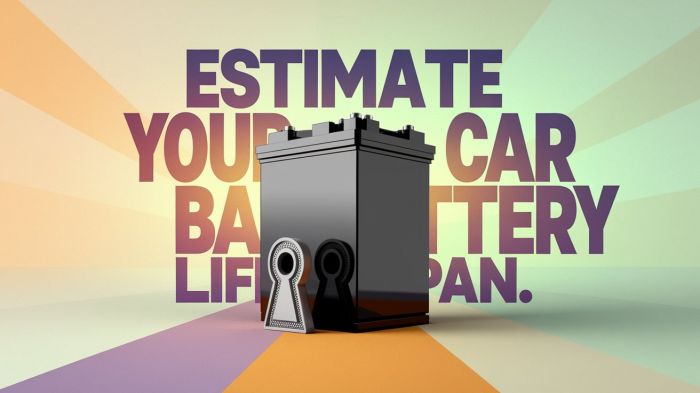Modern cars nowadays, like the Acura car model, have plenty of new and innovative features installed in them. One example is the Tire Pressure Monitoring System, or TPMS for short. These features allow you to stay up-to-date with your vehicle and warn you if there's something wrong.
Check TPMS system message highlights
- Common reasons:bad TPMS sensor, glitch in TPMS module, low tire pressure
- How to fix:check tire pressure, get it to a professional mechanic
- Possible consequences:tire monitoring won't be working
- Priority level:Low
- Can you drive?Yes
- DIY repair:Impossible
- Repair price range:$150-$300

Reasons For Why There Is an Error and the Solutions to Each
The TPMS feature is one of those new and innovative systems that make modern cars a luxury to have. As the name suggests, this system allows you to remotely monitor your car at all times.
So if you receive an error message, don't fret. It's the system's way of telling you that there's something wrong with your car's tires. Or, in some cases, there's a fault with the system itself.
1) Low Tire Pressure
One of the more common reasons why your car keeps displaying that error message is because your car's tires are in dire need of some air pressure. True to its name, the TPMS monitors and checks your car's tires to see if they have enough pressure in them, and resolving this issue is quite easy.
All you need to do is inflate your car's tires. Pretty simple, right? However, if you don't have any prior experience when it comes to inflating car tires, then this might present a challenge to you.
That's because you need to achieve the correct amount of air pressure in your car's tires to make the error message go away. Overpressurizing your car's tires will trigger the same error message as well.
To avoid this, check the correct amount of air pressure for your car's tires online. Or, you can bring your car to a nearby gas station or auto shop and have a professional do it for you.
2) Faulty Tire Pressure Sensor
Another common reason why the error message keeps popping up is due to the sensors' batteries running out of juice. Usually, there's a sensor located near each tire of your vehicle. They're responsible for powering up the TPMS, allowing it to monitor your car's tires without putting a strain on the car battery.
These batteries usually last between five and ten years, depending on how often you use your car every day. Although it lasts a long time, it's not unheard of for the battery to run out of juice and die. Corrosion can also decrease the batteries' lifespan over a long time.
Unfortunately, you can't simply replace the batteries. To fix this, you will have to replace the entire tire pressure sensor for the error message to go away.
3) Sensor Connection Error
There are times when driving over a rocky road or through humps can cause the TPMS error message to display on the screen. What this means is that the connection between the sensors and the car's main computer system went out of sync.
To fix this, you will need to reprogram the system using a TPMS reset tool. Without it, the error message will stay on display. If you don't own one or have no idea how to do it, bring your car to an auto shop and have a professional do it for you.
4) New Wheels/Tires
Changing your car's tires is normal for any car owner. Either you want a new set of tires to replace your old ones or you need to swap out tires because the season is changing.
But this could be the reason why your car's monitor keeps displaying the error message. That's because you will need to reconnect the sensors to the car's system again. And in some cases, this doesn't go smoothly at all.
Depending on the new tires and the weather, the amount of pressure you need will vary. As a result, you will need to reset the pressure requirements for the main system. This is so that the TPMS will continue to work as intended and provide you with the necessary information when driving.
Why You Should Not Ignore the TPMS Error Message?
If it ever crossed your mind to ignore the TPMS error message, don't. Why do you ask? Well, there are plenty of reasons why doing so is a bad idea.
First, the TPMS is there to keep you safe. It does this by warning you that there's something wrong with the system itself or with your car's tires. The moment you see that message pop up, you need to stop driving and inspect your car's tires.
Driving without enough air pressure inside your car's tires is more than just a bad idea. It's a life-threatening action, both for you and those onboard the vehicle with you. You could end up losing control over your car while driving, causing it to veer sharply when making a turn or slip up entirely on the road.
When that happens, you can easily get yourself into an accident. And that's one thing you should avoid when driving.
Another reason is inefficiency. Driving with tires that are not at their optimal state is inefficient and wasteful. You don't get enough mileage when driving with flat tires, and it severely decreases fuel efficiency.
How To Tell Which TPMS Sensor Is Faulty?
If the fault lies with the sensors, then it's highly likely that only one or two of the sensors are malfunctioning. Some car models tell you exactly which sensor is the issue. Others, though, do not.
To determine which sensor is faulty, you will need to use a code reader. Simply plug it into your car's main computer, and from there, it will diagnose the issue for you and tell you exactly where the problem is.
If you don't own a car reader, however, you can opt for the tried and true method of changing out the wheels if you have some spares lying around. Of course, this only works if the spare wheels are of the same type.
Why Does the Error Message Keep Showing Despite Making the Necessary Adjustments?
Even after manually verifying that everything is in order, you still need to drive your car around and test it out. Doing so allows your car's system to collect the necessary information it needs to review and accept the changes made.
To do this, you will need to drive around for a few minutes until your system recalibrates itself. Some car models will require your input as well, so make sure to check the display screen as well and follow any instructions given to you.
How Much Does It Cost to Repair Tire Pressure Sensor Fault?
It's not that expensive when it comes to having a professional fix the issues for you. On average, it will cost you anywhere between $40 and $100, depending on where you live. This also includes labor costs.
Sometimes, it won't cost you at all. As mentioned throughout the article, the usual problems that come with the TPMS error message are quite simple to fix.
All you need to do is either reset the system via your car's main computer using a TPMS reset tool or by simply inflating your car's tires. Changing out your wheels until the error message goes away is also another way to deal with the issue.
Either way, when it comes to fixing the TPMS error, it doesn't immediately burn a hole in your wallet. So feel free to relax and take a deep breath, knowing that you won't have to spend too much on repairs.
Conclusion
When the TPMS message suddenly shows up on your car's main display screen, don't panic. This is your car's way of warning you and keeping you safe.
Instead, make sure to heed the display warning and immediately check what's wrong with your car's tires. Try to remember if you swapped out the tires recently or if you drove on a bumpy road earlier in the day. Then, make sure that the air pressure in each tire is correct.
If all checks out, inspect the sensors' batteries and then the system. Bring your car to a professional if you can't identify the issue or have no prior experience dealing with this sort of problem.
About the authors
The CarAraC research team is composed of seasoned auto mechanics and automotive industry professionals, including individuals with advanced degrees and certifications in their field. Our team members boast prestigious credentials, reflecting their extensive knowledge and skills. These qualifications include: IMI: Institute of the Motor Industry, ASE-Certified Master Automobile Technicians; Coventry University, Graduate of MA in Automotive Journalism; Politecnico di Torino, Italy, MS Automotive Engineering; Ss. Cyril and Methodius University in Skopje, Mechanical University in Skopje; TOC Automotive College; DHA Suffa University, Department of Mechanical Engineering






Add comment